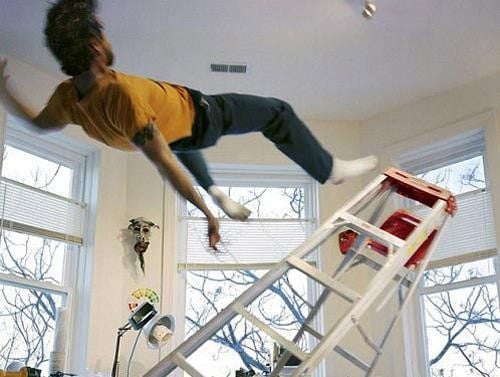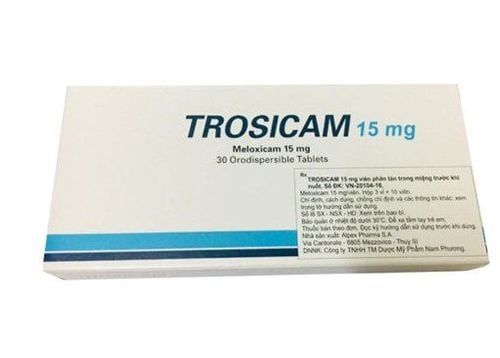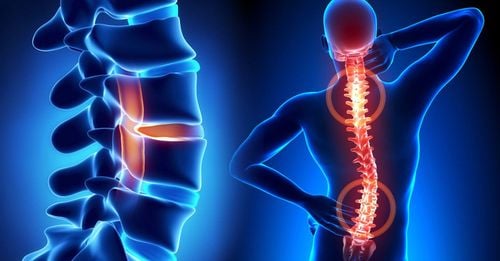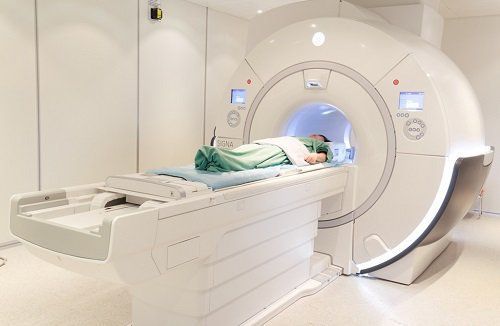This is an automatically translated article.
The article was consulted by Specialist Doctor I Nguyen Thanh Hai - Doctor of Radiology - Department of Diagnostic Imaging and Nuclear Medicine - Vinmec Times City International Hospital
The spinal cord is an important part of the central nervous system. A spinal cord injury is a serious type of injury that affects many bodily functions. When the spinal cord is severely damaged, the patient may face sequelae such as disability, quadriplegia, paralysis of both arms or legs. Diagnosis of spinal cord injury needs to determine the location of the injured spinal cord, in which imaging tools play an important role in diagnosing the location and extent of damage.
1. What is a spinal cord injury?
The spinal cord is the intermediate part between the brain and the peripheral nervous system. Spinal cord injury is damage to the spinal canal and the nerves that come from the spinal cord, greatly affecting the patient's quality of life. Signals between the brain and the central nervous system that control movement, sensation, reflexes, and other functions are disrupted when the spinal cord is damaged.Many spinal cord injuries occur between the ages of 15 and 25. Men account for a higher percentage than women, about 80% of all spinal cord injuries. In addition, the elderly group is also at high risk of spinal cord and spinal cord injuries due to osteoporosis.
2. Causes of spinal cord injury
Traumatic forces acting directly on the spine causing compression or fracture is the main cause of spinal cord injury. People with spinal cord injuries are common after falls, falls from heights, traffic accidents. Some athletes in vigorous, non-protective sports may also be at risk for spinal cord injury. The traumatic forces in these situations are strong forces.
In addition, spinal cord injury is reported after only a minor trauma. These patients often have comorbidities such as osteoporosis, osteomyelitis, spondylolisthesis, infection, malignancy.

3. Symptoms of spinal cord injury
Spinal cord injury presents clinically differently depending on the location and extent of the injury. People with spinal cord injury may have symptoms such as:
Back pain, at the site of injury, spreading along the path of the damaged nerve Decreased muscle strength or complete paralysis of the muscles in both hands and/ or two legs. Decreased ability to balance Decrease or loss of sensation in areas of the skin corresponding to the site of injury, including decreased sensation of cold, heat, touch sensation, paresthesia. Changes in vital functions such as pulse, blood pressure, temperature Abnormally increased sweating Signs of sphincter disorders such as defecation, urinary incontinence Shortness of breath, increased secretions of the respiratory tract Spinal cord injury is a trauma serious injury, so as soon as one of the above symptoms occurs, especially after an injury, the patient needs to go to the nearest medical facility for timely examination and treatment.
4. Diagnosis of spinal cord injury
Spinal cord injury is diagnosed based on a combination of clinical symptoms, history, mechanism of injury and laboratory facilities. As soon as the patient is admitted, the doctor can conduct a history and physical examination to rule out spinal cord injury.
However, accurate diagnosis of spinal cord injury requires the participation of paraclinical means, most importantly imaging techniques. The doctor will prescribe imaging techniques including:
X-ray film of the spine straight, tilted, computed tomography of the spine, magnetic resonance imaging of the spine, imaging tools not only help confirm the diagnosis. determining whether there is a spinal cord injury, but also helps to find the location of the injury, as well as other accompanying injuries such as fractures, tumors, hematomas...
Besides, there is currently no treatment method. help patients fully recover from spinal cord injuries, so when you have signs or experience injuries during work and play, you need to see a doctor to be checked and treated promptly.

In diagnosing spinal cord injuries, Vinmec International General Hospital has applied techniques of X-ray film of the spine straight and inclined, computed tomography of the spine, and MRI scan. When determining the medical condition, doctors will combine with many specialties to come up with the best treatment plan for the patient. At the end of the treatment process, patients are supported with rehabilitation exercises to help their health quickly stabilize and be able to participate in normal activities.
In addition to modern facilities, meeting all needs of examination and treatment, the hospital also converges a team of leading doctors and experts with many years of experience to help bring treatment results. highest for the patient.
Please dial HOTLINE for more information or register for an appointment HERE. Download MyVinmec app to make appointments faster and to manage your bookings easily.














